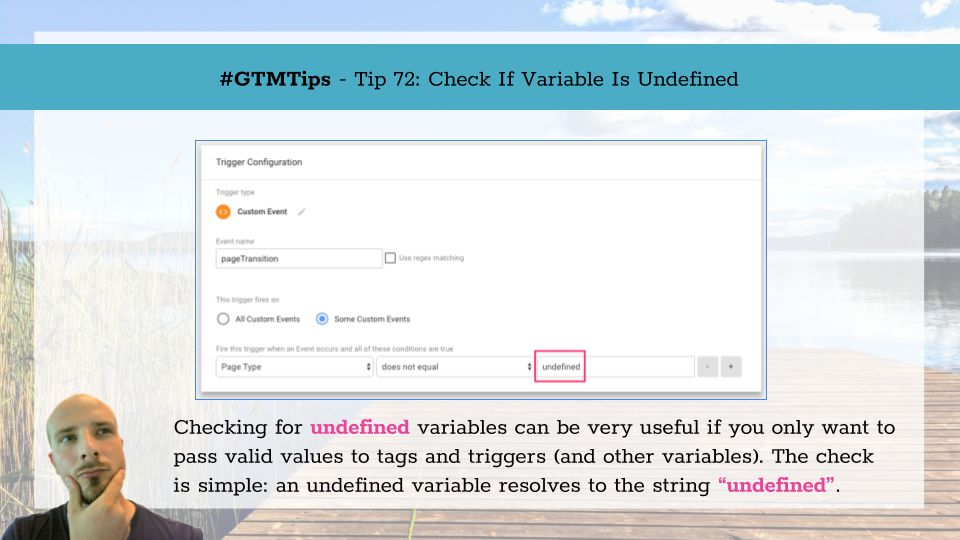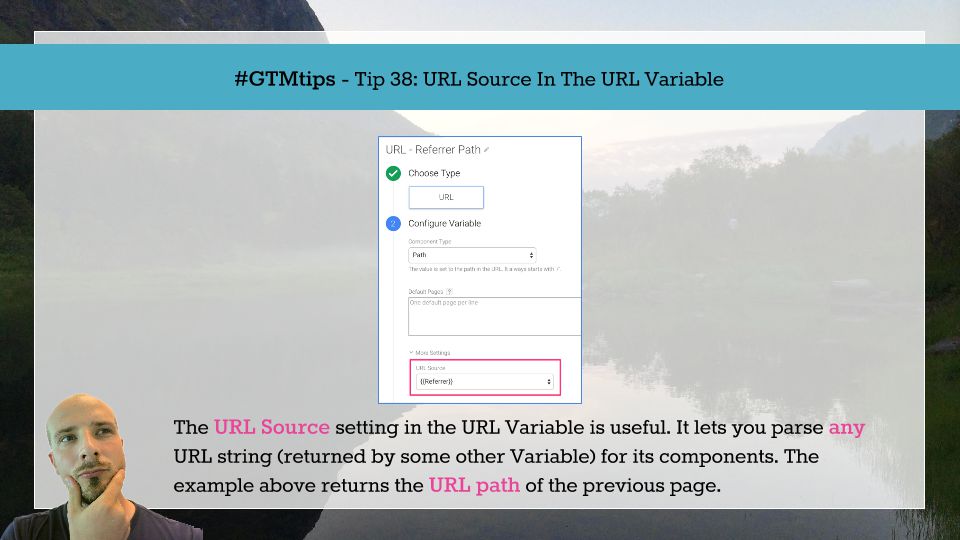This is one of those #GTMTips posts that I was certain I’d already written. So it came as a mild surprise when I realized I’d never tackled this aspect of Google Tag Manager.
It’s a short and sweet tip again. Today we’ll learn how to check if a variable is undefined using Google Tag Manager.
Tip 73: Check for undefined variable values If a variable is undefined, it means that a variable with the given name does not currently have any valid value in memory.



